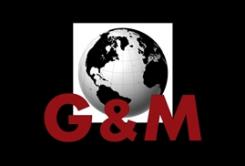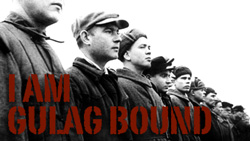Exclusive: Tom Tancredo asks, ‘Who in the White House assisted in the cover-up?’
Originally published, “A smoking gun for ‘Fast and Furious,” Oct. 7, 2011, WND
The other shoe has dropped in the “Fast and Furious” gun-walking scandal, and it has landed on Eric Holder’s doorstep. Members of Congress are calling for his resignation, and the chairman of the House Judiciary Committee has called for a special prosecutor to investigate the affair.
Holder’s resignation would be a good start. But if there is anyone in Washington who doubts that the White House not only knew about the illegal ATF project but was up to its elbows in it, that person must be in an hypnotic trance deep inside the CNN Washington bureau.
There is mounting evidence that far from being a rogue operation by a few ATF agents, the “Fast and Furious” gun-walking project had the backing of officials at the highest levels in the Obama administration.
Email messages between Justice Department officials and ATF managers made public last week by CBS News show that Attorney General Holder was well aware of the ATF operation in mid-2010, almost a full year earlier than previously admitted. This means Holder lied to a congressional committee. Why did he lie and what else has he been lying about?
Holder’s complicity in the ATF scandal is only the latest in a series of cases showing pervasive corruption inside the Department of Justice. The first case was the outrageous dropping of the prosecution the Black Panther Party for blatant, well-documented intimidation of Philadelphia voters in the 2008 election. The “Fast and Furious” scandal is remarkable only in its scope and sheer audacity – and the ugly byproduct: the death of U.S. Border Patrol agent Brian Terry.
The evidence of DOJ involvement and support for the illegal ATF operation also shows clearly that the White House was also aware of it. Again, there are some obvious and inevitable questions that flow from this fact, questions enterprising journalists are beginning to ask. For example, how could the White House be “aware” of the operation and not call a halt to it – unless it had the approval of the West Wing? If the president approved of the operation, what were the motives behind it?
It is worth remembering what brought on Richard Nixon’s impeachment and eventual resignation. It was not the Watergate break-in itself, because there was never any evidence that Nixon personally had prior knowledge of the break-in. But he did participate in the cover-up, which is a felony; it is obstruction of justice.
What is it that Holder is trying to hide by lying about his early awareness of the ATF project? Is he merely trying to save his own skin? Or is it more likely that he is protecting someone in the White House?
How plausible is it that multiple layers within the Justice Department approved the illegal operation to allow more than 2,000 semi-automatic weapons to be delivered to the Mexican drug cartels, but the White House was kept in the dark? And how plausible is it that “low-level White House National Security staff” knew about it but remained silent – unless they believed it had Oval Office approval?
Such questions about who knew about the operation and when will soon take a back seat to the really explosive question: What was the true motive behind the illegal operation? It is becoming clear the real purpose for getting more than 2,000 guns into the hands of Mexican drug cartels was purely political: The purpose was to support the discredited claim that guns purchased in U.S. gun stores are fueling the violence in Mexico.
The ATF has claimed for years that more than 90 percent of the guns used to commit murders inside Mexico come from the U.S., but the real figure is about 17 percent. The truth is that drug cartels get most of their weapons either from the Mexican military and police or from the black market in Europe and Asia.
What is becoming clear is that the anti-gun crusaders in the ATF and the Obama administration dreamed up the “Fast and Furious” scheme as a means to blame U.S. gun shops for the mayhem in Mexico.
There is abundant evidence that many ATF field agents questioned the wisdom of the operation. First, they knew the avowed purpose of the operation – tracking the route of the guns inside Mexico – was totally impractical and impossible to achieve. Once a gun crossed into Mexico, there was no way to track or monitor its journey through many levels of the cartel’s criminal organization. Second, they knew that the quantity of guns being “walked” into Mexico was far in excess of the number needed for that official purpose. Finally, they also knew the guns would inevitably be used to kill and maim innocent people, possibly on the U.S. side of the border, as well as within Mexico.
So, if the avowed goal of the operation was totally impractical and impossible to achieve, why did it have such high-level support over an extended period of time? If the presumed purpose made no sense, what was the real purpose? Did it have a motive that was never acknowledged because it was purely political?
The smoking gun is now pointing at Obama’s close friend, Eric Holder, and the Obama administration has been working fast and furious to hide this fact. What we need to know is who in the White House has assisted in the cover-up?
And just as I have been saying since this nightmare began, CBS has obtained proof that ATF in fact used “Fast and Furious” to make the case for gun regulations.
December 7, 2011
Documents: ATF used “Fast and Furious” to make the case for gun regulations
Documents obtained by CBS News show that the Bureau of Alcohol Tobacco, Firearms and Explosives (ATF) discussed using their covert operation “Fast and Furious” to argue for controversial new rules about gun sales.
PICTURES: ATF “Gunwalking” scandal timeline
In Fast and Furious, ATF secretly encouraged gun dealers to sell to suspected traffickers for Mexican drug cartels to go after the “big fish.” But ATF whistleblowers told CBS News and Congress it was a dangerous practice called “gunwalking,” and it put thousands of weapons on the street. Many were used in violent crimes in Mexico. Two were found at the murder scene of a U.S. Border Patrol agent.
ATF officials didn’t intend to publicly disclose their own role in letting Mexican cartels obtain the weapons, but emails show they discussed using the sales, including sales encouraged by ATF, to justify a new gun regulation called “Demand Letter 3”. That would require some U.S. gun shops to report the sale of multiple rifles or “long guns.” Demand Letter 3 was so named because it would be the third ATF program demanding gun dealers report tracing information.
On July 14, 2010 after ATF headquarters in Washington D.C. received an update on Fast and Furious, ATF Field Ops Assistant Director Mark Chait emailed Bill Newell, ATF’s Phoenix Special Agent in Charge of Fast and Furious:
“Bill – can you see if these guns were all purchased from the same (licensed gun dealer) and at one time. We are looking at anecdotal cases to support a demand letter on long gun multiple sales. Thanks.”
More Fast and Furious coverage:
Memos contradict Holder on Fast and Furious
Agent: I was ordered to let guns “walk” into Mexico
Gunwalking scandal uncovered at ATFOn Jan. 4, 2011, as ATF prepared a press conference to announce arrests in Fast and Furious, Newell saw it as “(A)nother time to address Multiple Sale on Long Guns issue.” And a day after the press conference, Chait emailed Newell: “Bill–well done yesterday… (I)n light of our request for Demand letter 3, this case could be a strong supporting factor if we can determine how many multiple sales of long guns occurred during the course of this case.”
This revelation angers gun rights advocates. Larry Keane, a spokesman for National Shooting Sports Foundation, a gun industry trade group, calls the discussion of Fast and Furious to argue for Demand Letter 3 “disappointing and ironic.” Keane says it’s “deeply troubling” if sales made by gun dealers “voluntarily cooperating with ATF’s flawed ‘Operation Fast & Furious’ were going to be used by some individuals within ATF to justify imposing a multiple sales reporting requirement for rifles.”
The Gun Dealers’ Quandary
Several gun dealers who cooperated with ATF told CBS News and Congressional investigators they only went through with suspicious sales because ATF asked them to.
Sometimes it was against the gun dealer’s own best judgment.
In April, 2010 a licensed gun dealer cooperating with ATF was increasingly concerned about selling so many guns. “We just want to make sure we are cooperating with ATF and that we are not viewed as selling to the bad guys,” writes the gun dealer to ATF Phoenix officials, “(W)e were hoping to put together something like a letter of understanding to alleviate concerns of some type of recourse against us down the road for selling these items.”
ATF’s group supervisor on Fast and Furious David Voth assures the gun dealer there’s nothing to worry about. “We (ATF) are continually monitoring these suspects using a variety of investigative techniques which I cannot go into detail.”
Two months later, the same gun dealer grew more agitated.
“I wanted to make sure that none of the firearms that were sold per our conversation with you and various ATF agents could or would ever end up south of the border or in the hands of the bad guys. I guess I am looking for a bit of reassurance that the guns are not getting south or in the wrong hands…I want to help ATF with its investigation but not at the risk of agents (sic) safety because I have some very close friends that are US Border Patrol agents in southern AZ as well as my concern for all the agents (sic) safety that protect our country.”
“It’s like ATF created or added to the problem so they could be the solution to it and pat themselves on the back,” says one law enforcement source familiar with the facts. “It’s a circular way of thinking.”
The Justice Department and ATF declined to comment. ATF officials mentioned in this report did not respond to requests from CBS News to speak with them.
The “Demand Letter 3” Debate
The two sides in the gun debate have long clashed over whether gun dealers should have to report multiple rifle sales. On one side, ATF officials argue that a large number of semi-automatic, high-caliber rifles from the U.S. are being used by violent cartels in Mexico. They believe more reporting requirements would help ATF crack down. On the other side, gun rights advocates say that’s unconstitutional, and would not make a difference in Mexican cartel crimes.
Two earlier Demand Letters were initiated in 2000 and affected a relatively small number of gun shops. Demand Letter 3 was to be much more sweeping, affecting 8,500 firearms dealers in four southwest border states: Arizona, California, New Mexico and Texas. ATF chose those states because they “have a significant number of crime guns traced back to them from Mexico.” The reporting requirements were to apply if a gun dealer sells two or more long guns to a single person within five business days, and only if the guns are semi-automatic, greater than .22 caliber and can be fitted with a detachable magazine.
On April 25, 2011, ATF announced plans to implement Demand Letter 3. The National Shooting Sports Foundation is suing the ATF to stop the new rules. It calls the regulation an illegal attempt to enforce a law Congress never passed. ATF counters that it has reasonably targeted guns used most often to “commit violent crimes in Mexico, especially by drug gangs.”
Reaction
Sen. Charles Grassley, R-Iowa, is investigating Fast and Furious, as well as the alleged use of the case to advance gun regulations. “There’s plenty of evidence showing that this administration planned to use the tragedies of Fast and Furious as rationale to further their goals of a long gun reporting requirement. But, we’ve learned from our investigation that reporting multiple long gun sales would do nothing to stop the flow of firearms to known straw purchasers because many Federal Firearms Dealers are already voluntarily reporting suspicious transactions. It’s pretty clear that the problem isn’t lack of burdensome reporting requirements.”
On July 12, 2011, Sen. Grassley and Rep. Darrell Issa, R-Calif., wrote Attorney General Eric Holder, whose Justice Department oversees ATF. They asked Holder whether officials in his agency discussed how “Fast and Furious could be used to justify additional regulatory authorities.” So far, they have not received a response. CBS News asked the Justice Department for comment and context on ATF emails about Fast and Furious and Demand Letter 3, but officials declined to speak with us.
“In light of the evidence, the Justice Department’s refusal to answer questions about the role Operation Fast and Furious was supposed to play in advancing new firearms regulations is simply unacceptable,” Rep. Issa told CBS News.
Related articles
- Yes, Fast and Furious was meant to force more gun control on America(thedaleygator.wordpress.com)
- Holder is so Busted. Double dose of Holder(fellowshipofminds.wordpress.com)
- Daily Benefactor News – Documents: ATF Used “Fast & Furious” To Make Case For Gun Regulations (thedaleygator.wordpress.com)
- Why Is Dhimmedia Not More Curious about Fast & Furious?(bokertov.typepad.com)
- ATF wanted Fast & Furious fiasco to push for more gun control(crushliberalism.com)
- Documents: ATF used “Fast and Furious” to make the case for gun regulations (tarpon.wordpress.com)
- The ATF’s “Collateral Damage”: 2 Federal Agents and 300 Civilians Sacrificed to Make the Case for Gun Control(treeofmamre.wordpress.com)
- Documents: ATF used “Fast and Furious” to make the case for gun regulations (yourdaddy.net)
- Today’s Big Gun Smuggling Hearing Could Be The End For Eric Holder(businessinsider.com)
- Is Eric Holder’s grip on the ‘Fast and Furious’ fiasco slipping? (video)(csmonitor.com)
- AND SOME THOUGHT I WAS OVERLY CYNICAL FOR SUGGESTING THIS POSSIBILITY: New e-mails: ATF officials d… (pjmedia.com)
- Issa: Holder misled Congress on Fast & Furious to cover for staff(hotair.com)
- Is Eric Holder’s grip on the ‘Fast and Furious’ fiasco slipping? – Christian Science Monitor (csmonitor.com)
- Palin: “Smoking Gun” in Fast & Furious? (sarahpalinblog.typepad.com)
- Holder to get ‘Furious’ GOP grilling (politico.com)









Speak Your Mind
You must be logged in to post a comment.